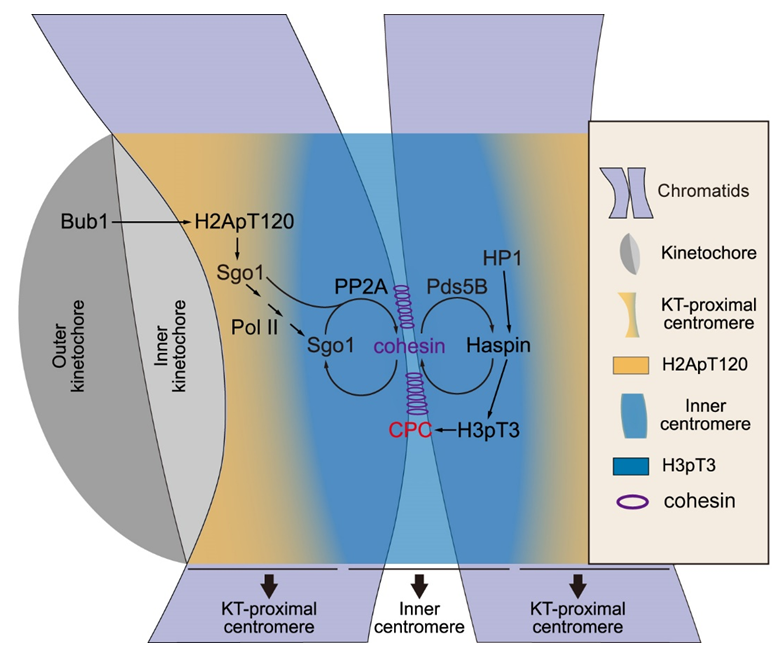On November 29,2018, the Fangwei Wang Labat Life Sciences Institute, Zhejiang University, published a research paper in Journal of Biological Chemistry entitled "A positive feedback mechanism ensures proper assembly of the functional inner centromere during mitosis in human cells".
Error-free chromosome segregation in mitosis requires timely resolution of sister chromatid cohesion and correct attachment of kinetochores to spindle microtubules. The centromere is a highly specialized chromatin region where sister chromatids are held together and the kinetochore is assembled during mitosis. At the intersection of the inter-kinetochore (inter-KT) axis and the inter-sister chromatid axis is the inner centromere region. Through acting as a platform to recruit various proteins, the inner centromere plays a key role in the regulation of sister chromatid cohesion and kinetochore-microtubule (KT-MT) attachments. Impaired integrity of inner centromeres causes chromosome missegregation, leading to chromosomal instability (CIN) which is a hallmark of cancer cells and may contribute to tumorigenesis. However, at the molecular level, it remains largely elusive how the functional inner centromere is assembled.
In this study, using CRISPR/Cas9-based gene editing in HeLa cells, Cai Liang and Zhenlei Zhang et al. disrupted the interaction of Shugoshin 1 (Sgo1) with histone H2A phosphorylated on Thr-120 (H2ApT120) to selectively release Sgo1 from mitotic centromeres. Interestingly, cells expressing the H2ApT120-binding defective mutant of Sgo1 have an elevated rate of chromosome missegregation accompanied by weakened centromeric cohesion and decreased centromere accumulation of the chromosomal passenger complex (CPC), an integral part of the inner centromere and a key player in the correction of erroneous KT-MT attachments. When artificially tethered to centromeres, a Sgo1 mutant defective in binding protein phosphatase 2A (PP2A) is not able to support proper centromeric cohesion and CPC accumulation, indicating that the Sgo1-PP2A interaction is essential for the integrity of mitotic centromeres. The authors further provided evidence indicating that Sgo1 protects centromeric cohesin to create a binding site for histone H3-associated protein kinase Haspin, which not only inhibits the cohesin release factor Wapl and thereby strengthens centromeric cohesion, but also phosphorylates histone H3 at Thr-3 to position CPC at inner centromeres. Taken together, these findings reveal a positive feedback-based mechanism that ensures proper assembly of the functional inner centromere during mitosis. They further suggest a causal link between centromeric cohesion defects and chromosomal instability in cancer cells.
Graduate student Cai Liang and Zhenlei Zhang areco-first authors of this study. Professor Fangwei Wang is the corresponding author.This work was supported by grants from National Key Research and Development Program of China, Natural Science Foundation of Zhejiang Province, National Natural Science Foundation of China, Newton Advanced Fellowship, and Fundamental Research Funds for the Central Universities.

Model for a positive feedback network involving Sgo1 and Haspin that ensures proper assembly of the functional inner centromere on a mitotic chromosome
Links:http://www.jbc.org/content/early/2018/11/29/jbc.RA118.006046.abstract



